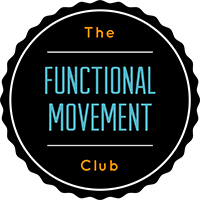
The Reason For Every Injury You’ve Ever Had, In One Blog.
Why You Hurt Yourself:
The reason for every injury you’ve ever had, can be explained by the graph below. It shows what loads you are placing on your body everyday and how much load your body can cope with. Before it gives you pain.
The Capacity (%) is the amount of load your body can handle before pain or injury. As long as you stay below your capacity (100%), you will be pain free. Once you get above your capacity issues start to arise. It may not be painful right now but if you continue to cross it, it will.

Why exceeding your capacity temporarily doesn’t always cause pain:
Say your max squat is 100kg, you can still squat 101 kg. It doesn’t look pretty but you get it up, no pain. If you consistently train at 101kg with crappy form it will eventually lead to injury. If you only exceed your load capacity by a little you get DOMS (delayed onset muscle soreness). This temporary pain will go away if you give your body enough time to recover between exercise. If you exceed your load capacity by a lot it’s a great reason for injury.
The Reason for Injury:
So you walk into the gym for a workout. You’re feeling a little stiff in your lower back, you warm up it feels ok. You complete your workout with deadlifts and then on your last lift you feel a pop, then a little warm sensation comes up in your back. . . .
All of a sudden you can barely breathe and you need to lay on the floor for 10 mins because of the excruciating pain radiating from your lower back. It radiates around the back of your hips, then shoots pain down the back of your leg (congratulations you have just injured your disc because you didn’t listen to the warning signs = your tight back and reason for injury).
PSST . . . Heres a FREEBIE I made for you
The More Sensible Option:
The other alternative is you have a tight back. You go to the gym, warm up make sure it feels better, then work a different body part (ie Upper body). You wake up tomorrow happy and feeling less stiff than the day before.
Your Baseline Capacity:
There are a few things that fill up your load capacity bucket. Before you even roll out of bed in the morning: Anatomical defects, stress, diet sleep, and the efficiency in which you move (Movement diagnosis) have all been accounted for by your body.
- Anatomical defects: you rolled ankle, torn meniscus, have herniated your disc (your entire injury history)
- Stress, diet, sleep: this is the most easily modifiable. It is your ability to recover, you are constantly breaking down or building up.
- Movement Diagnosis: What can or can’t you do in the gym.
All these things are adding to your baseline load capacity. They begin filling up your bucket before you even get out of bed.
You wake up, and have your morning coffee. Then go to work (adds more stress). Next, do a workout (adds more stress). By about mid afternoon you start to feel your back tightening up. This is a sign you are reaching your load capacity (the 100% line). Its also a common reason for injury.

It Was That Darn Piece of Popcorn:
You tend to look at your body as the last thing you did, caused you an injury. It was that last deadlift, I bent over to pick up a piece of popcorn off the floor.
It wasn’t the piece of popcorn.
That’s like going out to a bar, having 20 beers and a shot of tequila in a night. You wake up the next day completely hungover and thinking this is all because of that one shot of tequila (we’ve all been there) completely discounting the 20 beers you had beforehand.
You hurt your back because you had already exceeded your load capacity by not sleeping enough, eating a bad diet, being too stressed at work ( or at home), or because you don’t stretch enough. It’s never one single moment (unless you get hit by a bus) that hurts your back. It’s the accumulation of these things over days, weeks, months.
Modifiable Stressors (Good News):
It’s not all doom and gloom. Just because you have hurt your back in the past, doesn’t mean you have a bad back and better learn to live with pain and tightness.
Anatomical defects, stress, movement diagnosis are all modifiable: sleep, eat well, daily mobility and skill work.
For example:
20 year old female who does an hour of yoga each day, eats a well balanced diet with plenty of anti-inflammatory foods, and sleeps 8 hrs.
50 year old man who sits at a desk 10 hours a day, is super stress at home, grabs takeaway each day because he doesn’t have time to cook, slept 4 hrs and had to chug 2 cups of coffee to make it to the morning at 6am.
They are both starting with very different loads each day. Which one do you think is more likely to hurt their back doing deadlifts in the gym?
Empty Your Bucket Regularly:
If you can empty as much out of your baseline stressor before you hit the gym (morning/night or anytime in between) you can smash your workout and walk out feeling great. You wake up feeling good the next day and are well on your way to hitting your health and wellness goals.
Over time you can increase your capacity so that instead of having your bucket filled up from a moderate workout and send you into a pain spiral. You can have 50% extra stress to put on your body before you feel anything.
If you can increase capacity (work hard and recover smarter), faster than the load is placed, then this gap gets bigger. If you aren’t adding in recovery (or listening to your body) the gap gets smaller and you are getting closer and closer to the edge of a cliff (your injury).
Whats Next?
Take a look at your nutrition, make sure you are regularly sleeping 7 ½ – 8 hours, and pick yourself up a daily mobility habit. Listen to your body and take a rest day if you are feeling tired, run down, or you are losing some motivation for the gym.
Need Some Extra Help With Your Mobility? Click Below Or Give Us A Call:
Check out our Better Mobility Program.(Click Here)






